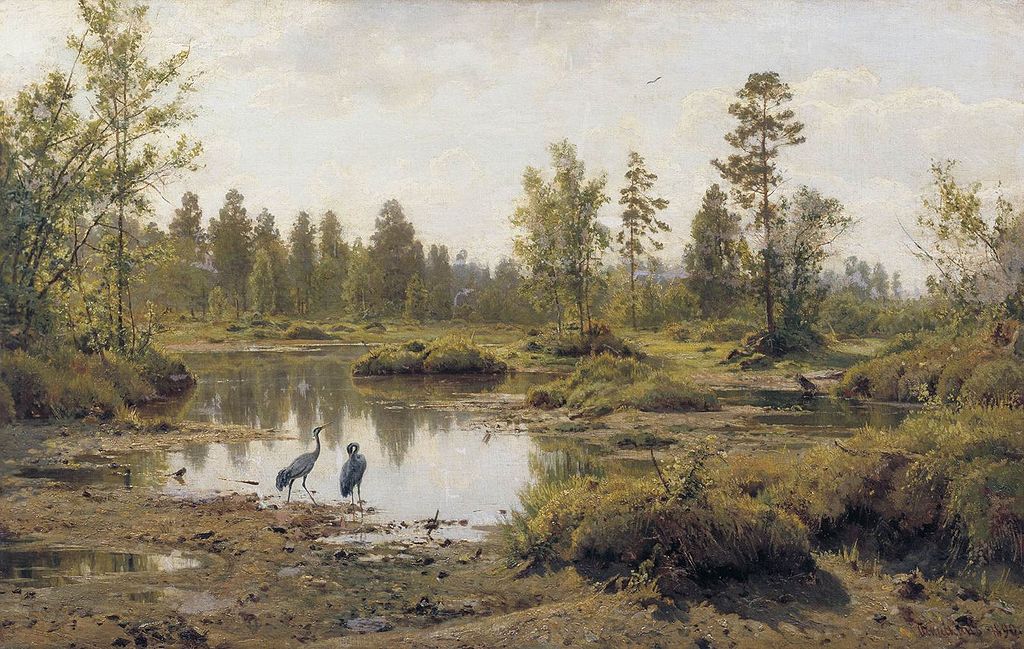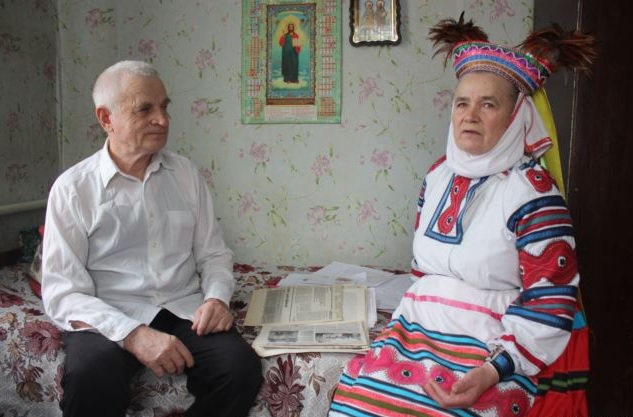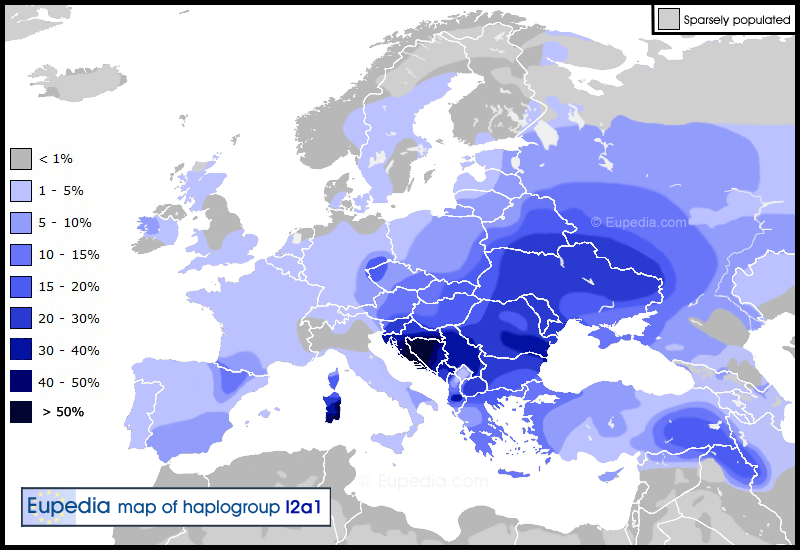OEC – David Gorodok-Turov style
I love this picture. Traditional head dress from Belarus.
Kocham to zdjęcie. Tradycyjna chusta i czapka na głowę z Białorusi.

This head dress, belongs to the so called „David Gorodok-Turov” style – a complex of traditional Belarusian folk costumes of the Polesye.
Ten strój na głowę należy do tzw. Stylu „Dawida Gorodoka-Turowa” – kompleksu tradycyjnych białoruskich strojów ludowych z Polesia.
The area where we find this style of traditional folk dress lies along the Pripyat River, which flows east through Ukraine, then through Belarus parallel to Ukraine border, and then Ukraine again, draining into the Dnieper.
Obszar, w którym znajduje się ten tradycyjny strój ludowy, leży wzdłuż rzeki Prypeć, która płynie na wschód przez Ukrainę, a następnie przez Białoruś równolegle do granicy z Ukrainą, a następnie ponownie do Ukrainy, wpływając do Dniepru.

Along the river lie the Pinsk Marshes, a vast natural region of wetlands along the forested basin of the Pripyat River and its tributaries from Brest to the west to Mogilev to the northeast and Kiev to the southeast. It is one of the largest wetland areas of Europe.
Wzdłuż rzeki leżą Bagna Pińskie, rozległy naturalny obszar mokradeł wzdłuż zalesionej zlewni rzeki Prypeć i jej dopływów od Brześcia na zachód do Mohylewa na północnym wschodzie i Kijowa na południowym wschodzie. Jest to jeden z największych obszarów podmokłych w Europie.

Now here is something very very interesting indeed. My friend Sima Kosminski sent me a link to this article, which contains an interview with a couple from Lelikov near Kobrin in Polesye.
Teraz jest tu coś bardzo interesującego. Moja przyjaciółka Sima Kosminski przysłała mi link do tego artykułu, który zawiera wywiad z parą z Lelikowa koło Kobryna na Polesiu.

They are Peter and Anastasia Shapetsyuki – known collectors of local folklore.
Like other people in Polesye, who wear this „David Gorodok-Turov” style of traditional folk costume, they apparently speak their own unique dialect which is different from the dialects of the neighboring population. And they have a very interesting legend that explains why their language is different:
„Serb tribes were great enemies of the Romans. Finally a Roman emperor got really angry and sent a great army to attack them. The Serbs were driven out of their homeland and came and settled down here, in the Pinsk Marshes, in Polesye…”
Now what Serbs and what Romans is this legend talking about? Balkan Serbs and Romans? Or Baltic Sorbs and Holy Roman Empire? Both groups of Serbian tribes were indeed great enemies of their „Romans” and waged centuries long wars against invading „Romans”. So both are very good candidates to be „the Serbs” from the legend.
What is interesting, judging by this map from Eupedia, it seems that genetically Polesyans are definitively linked to Balkan Serbs:
Są to Peter i Anastasia Shapetsyuki – znani kolekcjonerzy lokalnego folkloru.
Podobnie jak inni ludzie na Polesiu, którzy noszą ten tradycyjny strój ludowy „David Gorodok-Turov”, najwyraźniej mówią oni swoim unikalnym dialektem, który różni się od dialektów sąsiedniej ludności. I mają bardzo interesującą legendę, która wyjaśnia, dlaczego ich język jest inny:
„Serbskie plemiona były wielkimi wrogami Rzymian. W końcu rzymski cesarz naprawdę się rozgniewał i wysłał wielką armię, by ich zaatakować. Serbowie zostali wypędzeni ze swojej ojczyzny i przybyli i osiedlili się tutaj, w Pińskich Bagnach, na Polesiu. . ”
O czym mówią Serbowie i co Rzymianie? Bałkańscy Serbowie i Rzymianie? Albo bałtyccy Serbołużyczanie i Święte Cesarstwo Rzymskie? Obie grupy plemion serbskich były rzeczywiście wielkimi wrogami swoich „Rzymian” i prowadziły stulecia wojny przeciwko inwazji „Rzymian”. Tak więc oba są bardzo dobrymi kandydatami do bycia „Serbami” z legendy.
Co ciekawe, sądząc po tej mapie z Eupedii, wydaje się, że genetycznie Polesianie są ostatecznie związani z bałkańskimi Serbami:

What do you think?
This is a very very interesting development, don’t you think so?
Does anyone have any additional information about this legend or about Polesye culture and language?
Co myślisz?
To bardzo interesująco się rozwija, nie uważasz?
Czy ktoś ma jakieś dodatkowe informacje o tej legendzie lub o kulturze i języku Polesia?
źródło: http://oldeuropeanculture.blogspot.com/2017/03/david-gorodok-turov-style.html
